Augsburg Fortress Jesus Studies Collection (18 vols.)
Digital Logos Edition
This title is no longer available for purchase.
Overview
This collection provides readers with the best in scholarship from well-known names in the field of New Testament and Jesus studies including Ben Witherington III, Richard Horsley, Mary Ann Beavis, and more! Bringing together their expertise, the Augsburg Fortress Jesus Studies Collection offers pastors, students, and laypeople a deeper look at numerous topics surrounding Jesus’ character, power, and impact.
The collection reveals the historical and social setting surrounding Jesus’ ministry. It presents Jesus as a politician and prophetic sage, highlighting his message, impact, activities, and response to the imperial power during the period of his ministry. Several volumes analyze the nature, implications, and historical impact of Christ’s crucifixion.
The collection also studies the historical reality and theological meaning of Jesus’ resurrection, and illustrates the significance of Jesus’ incarnation. It critiques various New Testament hypothesis, including Wrede’s messianic secret, Theissen’s “wandering radicals,” and Jesus’ teaching on basileia. In addition, it provides a social history of the earliest churches, presents an Asian Christology, calls the present-day church to be a “contrast society,” and explores historical and modern-day portrayals of Jesus.

- Presents various roles Jesus played
- Provides an in-depth look at the historical and social setting surrounding Christ’s ministry
- Analyzes the impact of Christ’s crucifixion, resurrection, and incarnation
- Title: Augsburg Fortress Jesus Studies Collection
- Publisher: Augsburg Fortress
- Volumes: 18
- Pages: 4,157
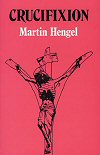
In a comprehensive and detailed survey on its remarkably widespread employment in the Roman empire, Dr. Hengel examines the way in which “the most vile death of the cross” was regarded in the Greek-speaking world and particularly in Roman-occupied Palestine.
His conclusions bring out more starkly than ever the offensiveness of the Christian message: Jesus not only died an unspeakably cruel death, he underwent the most contemptible abasement that could be imagined. So repugnant was the gruesome reality, that a natural tendency prevails to blunt, remove, or domesticate its scandalous impact. Yet any discussion of a “theology of the cross” must be preceded by adequate comprehension of both the nature and extent of this scandal.
The book is rewarding both for the extensive amount of historical information about crucifixion which is provided and for an appreciation of the stigma which would have been attached to this punishment.
—Religious Studies Review
The author’s formidable survey of the classical literature gives new eloquence to Origen’s description of crucifixion as mors turpissima (more vile death), or to Paul’s preaching of the ‘scandal of the Cross.’
—The Bible Today
This valuable book deserves a wide circulation. It is worth reading and rereading. Its implications within the theological framework and message of the New Testament need to be most carefully thought through and meditated on.
—Concordia Journal
One can probably find more about crucifixion in this book than anywhere else. . . . Teachers and ministers will not want to deal with the crucifixion of Christ again without first reading Hengel.
—Christianity Today
Martin Hengel is emeritus professor of New Testament and early Judaism at the University of Tübingen, Germany. Among his many important books are Judaism and Hellenism, Between Jesus and Paul, The Atonement, and Property and Riches in the Early Church.
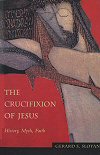
Jesus of Nazareth died on a cross at the hands of Roman justice around the year 30 AD. Thousands of others perished in the same way, and many people before and since have suffered far more gruesome torments. Why then is Jesus, Gerard Sloyan asks, uniquely and universally remembered for his suffering death? How has his death brought solace to many millions?
To answer this question, Gerard Sloyan in this powerful historical tour de force tracks the legacy of the cross across two millennia of Christian reminiscences, piety, art, speculation, and mythicizing. Beginning with New Testament accounts, he shows how Jesus’ death came to be seen as sacrificial. He then plots the emergence and development—in theology, liturgy, literature, art—of the conviction that Jesus’ death was redemptive, as seen both in soteriological theory from Tertullian to Anselm, in the Reformation and modern eras, and in more popular religious responses to the crucifixion.
Sloyan’s impressive scholarship and keen theological insights bring to light both the historical realities of Jesus’ death and the many and profound ways in which the cross has been received in the hearts and minds of those who profess Jesus’ name.
Gerard S. Sloyan is emeritus professor of religion at Temple University and visiting professor of religion and religious education at Catholic University of America, Washington, DC. He is the author of numerous books, including Why Jesus Died and Preaching from the Lectionary: An Exegetical Commentary.
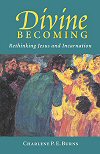
Despite the feverish pace of publishing in historical Jesus studies, biblical scholars and theologians have not notably progressed in addressing the meaning and significance of the figure of Jesus in ways credible for contemporary persons.
In this creative and insightful work, Burns seeks to understand the significance of Jesus and his incarnation through the category of participation. The central theological claims in the traditional concept of incarnation are anchored and illumined by Jesus’ particular ability for empathy, sympathy, attunement, and entrainment. This notion, derived from the psychological research of Daniel Stern, allows Burns to show that incarnation—the capacity to participate in the life of others—is present not only in Jesus but to some extent in all people and in all religions. It further illumines features of God’s Trinitarian life and our lifelong journey into God (deification).
What Charlene Burns attempts to answer in Divine Becoming is surely one of the knottiest contemporary Christological puzzles: how can orthodox Christology be understood, that is, made persuasive, really internalized, deeply appropriated? She does so by a creative and credible use of psychological analysis (of empathy and sympathy), showing that God and the human belong together, not only in Jesus, but in all of us. This book will be, I believe, at the center of future Christological discussion.
—Sallie McFague, Emerita Carpenter Professor, Vanderbilt University
Divine Becoming is a beautifully articulated and carefully reasoned book, conversant with the classical theological tradition. Charlene Burns creatively incorporates interdisciplinary research into the human phenomena of entrainment, attunement, and altruism to interpret the meaning of incarnation. Where divine empathy meets the human capacity for self-transcendence on behalf of others, there deification occurs like unto Jesus.
—Craig L. Nessan, academic dean and professor of contextual theology, Wartburg Theological Seminary
Charlene P. E. Burns is professor of religious studies at the University of Wisconsin-Eau Claire.
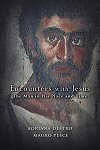
What was there in Jesus’ person, behavior, and words that prompted not only much enthusiasm but also much hostility? This compelling portrait of the man Jesus of Nazareth by two pioneers of the anthropological study of early Christianity answers this vital question. They bring the fruit of years of scholarship to bear on a radical figure in Roman Galilee and on his encounters with others and the movement those encounters inspired. They give close attention to the everyday realities that shaped those encounters: the facts of travel, common meals, domestic space, and the interactions of bodies. The result is a refreshing new look at the man who proved so significant-and so controversial-in Western culture.
Recent scholarship has provided numerous works that have opened up the discussion of the historical Jesus in fresh ways. In this exciting new work on Jesus, Destro and Pesce collaborate to investigate Jesus in terms of ‘lifestyle’ or ‘existential praxis’—that is, by examining Jesus’ habitual actions that reveal the depths of his personality and intentions. They do this by looking at the concrete realities of Jesus’ relationships—not only to other people, but to the land as well. They explore his commensality, his emotions, and his body in ways that bring new focus to old questions. Every reader will be rewarded by engaging the work of these two veteran interpreters.
—K.C. Hanson, editor in chief, Wipf and Stock
Adriana Destro is a professor of cultural anthropology at the University of Bologna and the author of numerous books on anthropology and the anthropological study of religion.
Mauro Pesce is the professor of the history of Christianity at the University of Bologna and author of numerous books in New Testament studies.
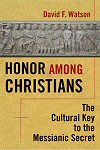
Readers have long puzzled over peculiar aspects of the Gospel of Mark: Jesus’ attempts to conceal his deeds and his identity. William Wrede called these and similar motifs the “messianic secret” in Mark, and proposed that Mark had invented the “secret” to explain why the announcement of the arrival of the Son of God had not taken the world by storm. Other scholars have disagreed: perhaps Mark meant to highlight Jesus’ divinity (after all, Jesus usually doesn’t succeed in keeping himself hidden!) or perhaps Mark wanted to tie Jesus’ identity to his destiny on the cross as a warning to disciples that they may face persecution. Or, some have proposed, there simply is no single explanation for all of Jesus’ bewildering behaviors in the Gospel.
David F. Watson brings a new perspective to the “messianic secret,” relying not on the Christological concerns of nineteenth- and twentieth-century theologians, but on recent insights into the role of honor and shame in ancient Mediterranean culture on the part of social scientists. Mark’s portrayal of Jesus simultaneously shows his ability to provide favors and benefits to others and his refusal to put himself forward or draw attention to himself as a benefactor, thereby teaching that in God’s kingdom it is not the great and powerful who are most highly regarded, but the humble. Mark’s depiction of Jesus is part of a larger effort to promote a radically different understanding of honor within the family of faith.
Taking up and refining insights from recent social–scientific exegetical research on secrecy in the Ancient Mediterranean world, Watson convincingly demonstrates that Wrede’s messianic secret hypotheses is entirely culturally implausible. Concealment passages in Mark primarily reflect the day–to–day concerns about honor and shame among early believers who would have understood the Gospel to be addressing these issues.
—John J. Pilch, visiting professor, Georgetown University
David Watson has written a scholarly and very useful monograph. His soundings into the roles of secrecy in the ancient Mediterranean would further illustrate the value of anthropological history. Perhaps now Wrede’s understanding of the ‘messianic secret’ in Mark may finally be laid to rest.
—Bruce J. Malina, professor of New Testament and early Christianity, Creighton University
Honor among Christians evinces perhaps the most thorough deployment of cultural anthropology for understanding Mark’s Gospel that I know, and one of the most sophisticated. Watson convincingly argues that Wrede’s durable prism of ‘the messianic secret’ has occluded our exegetical vision, which may be corrected by adopting lenses more appropriate to Mark’s own social world. The text, not a method, remains focal in Watson’s analysis, which opens rather than shuts down a broad range of productive conversation with other interpretive approaches. This is a work of genuine importance, chiefly because it illumines how subversive the Second Gospel was in its own place and time—and remains so in our own.
—C. Clifton Black, Otto A. Piper Professor of Biblical Theology, Princeton Theological Seminary
David F. Watson is associate professor of New Testament and academic dean for academic affairs at United Theological Seminary, Dayton, Ohio. He has contributed to New Proclamation, Lectionary Homiletics, and the Wesley Study Bible.
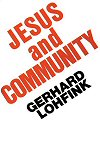
Gerhard Lohfink calls the present-day church to once again be the “contrast society,” which attracts non-believers by living what it preaches and by being different without being narrowly sectarian.
Gerhard Lohfink is a German Catholic priest and theologian. He was Ordinarious Professor for the New Testament on the Catholic Theological Faculty at the University of Tübingen in Germany from 1976–1986.
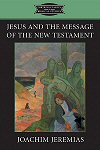
Joachim Jeremias was one of the most innovative and productive New Testament scholars of the twentieth century. This volume brings together some of his best-known works on historical Jesus research and core issues concerning Gospel tradition.
Joachim Jeremias was the acknowledged twentieth-century specialist on the Semitic language of the Jesus traditions. His work on Jesus’ parables, prayers, and Eucharistic words, as well as Jesus’ social contexts, are still much consulted. The shorter essays collected here are excellent distillations of his key ideas. They are models of simplicity and clarity and deserve to be read and re-read by scholar and student alike.
—Dennis Duling, emeritus professor, Canisius College
Joachim Jeremias (1900–1979) was a German Lutheran theologian. He was a scholar in Near Eastern studies and professor of New Testament at the University of Goettingen, Germany. He is author of several books, including Jerusalem in the Time of Jesus.
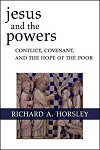
Refusing a false dichotomy between “politics” and “religion” in Jesus’ world (and our own), Jesus and the Powers rediscovers Jesus’ response to the imperial power of his day. Richard A. Horsley describes the relevance of political realities under great empires for understanding the rise of covenantal theology and apocalyptic vision in Israel’s history. Then he explores aspects of Jesus’ activity in the context of the Roman Empire. Horsley examines Jesus as an exorcist and prophetic figure and the character of his death by crucifixion. He also shows how the community life in the early Pauline assemblies gave form to a new response to imperial powers—and stimulus to contemporary readers to re-imagine their own response to political realities in our own day.
Horsley brings together the theme of the restoration of the people of God with the transformation of the Powers in an illuminating and accessible style. The implications of the teaching and acts of Jesus for our own time blaze a trail in this brilliant and thought–provoking book.
—Walter Wink, emeritus professor of biblical interpretation, Auburn Theological Seminary
In Jesus and the Powers, Richard Horsley synthesizes a broad array of insights into the polyvalent character of ‘power’ in ancient cultures and brings this synthesis to bear on a provocative description of the message, activities, and impact of Jesus. Horsley takes seriously not only the context in which Jesus lived, called for renewal, and died but also the sustained narrative presentations of the Gospels as the basis for an account of Jesus’ life and significance. Especially stimulating is Horsley’s account of the crucifixion as the decisive moment of empowerment for the continuation and growth of the early Jesus movements.
—Daniel A. Smith, associate professor of New Testament theology, Huron University College
Richard A. Horsley is distinguished professor of liberal arts and the study of religion at the University of Massachusetts, Boston. He is the author of The Message and the Kingdom, Jesus and the Spiral of Violence, and Jesus and the Empire.
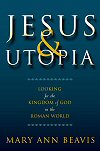
Scholarship on the historical Jesus and, now, on the “Jesus movement” generally divides into separate camps around two sticky questions: was Jesus an apocalyptic prophet and was the movement around him political, that is, nationalistic or revolutionary?
Mary Ann Beavis moves the study of the historical Jesus in a dramatic new direction as she highlights the context of ancient utopian thought and utopian communities, drawing particularly on the Essene community and Philo’s discussion of the Therapeutae, and argues that only ancient utopian thought accounts for the lack of explicit political echoes in Jesus’ message of the kingdom of God. The resulting portrait of Jesus, and of the basileia movement in which he participated, demonstrates that Jesus and his circle shared in the utopian impulses of their age.
Mary Ann Beavis locates Jesus’ teaching about the basileia of God in a richly drawn landscape of ancient utopian movements—illuminating indeed!
—Stephen J. Patterson, professor of New Testament, Eden Theological Seminary
Mary Ann Beavis is an associate professor of religious studies at St. Thomas More College, University of Saskatchewan, Saskatoon, and author of several books and articles in the fields of New Testament studies and urban studies. She was founding editor of The Journal of Religion and Popular Culture and The Canadian Journal of Urban Research.
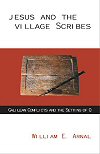
This volume challenges Gerd Theissen’s dominant thesis of “wandering radicals” as the earliest spreaders of the Jesus tradition. Several conclusions emerge: (1) the textual evidence for the “wandering radicals” hypothesis is not tenable and it must be replaced with one that more closely comports with the evidence: (2) the immediate context of the Jesus movement, and of Q in particular, is the socio-economic crisis in Galilee under the Romans; and (3) the formation of Q is the product of Galilean village scribes in the Jesus movement reacting to the negative developments in Galilee that affected their social standing.
Arnal moves decisively beyond earlier Q studies, which focused almost exclusively on literary history without dealing with the social realities of the first century.
Widely read recent interpreters have used the Harnack-Theissen construct of ‘itinerant charismatics’ to portray Jesus and his followers as innocuous Cynic-like ‘culture critics.’ In yet another devastating critique, William Arnal demonstrates that, in addition to being highly problematic as sociology, the ‘itinerant charismatics’ construct has no basis in ancient sources such as Q and the Didache.
—Richard Horsley, distinguished professor of liberal arts and the study of religion, University of Massachusetts
This important monograph builds on Kloppenborg’s Q-stratigraphy and examines the original material and ideological circumstances of the Synoptic Sayings Source. . . . Arnal’s noteworthy contribution deserves careful study by every student of Christian origins.
—Douglas E. Oakman, professor of religion, Pacific Lutheran University
William E. Arnal is an associate professor in the Department of Religious Studies at the University of Regina, Saskatchewan. He is coeditor of and contributor to Whose Historical Jesus?.
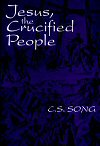
A deeply moving and challenging book, Jesus, the Crucified People breaks a theological stranglehold on the figure of Jesus and glimpses in a new, non-Western way both Jesus and Christianity.
Against the rich cultural background of Asia, Song’s volume explores the mystery of the Word that from the beginning of time now comes poignantly to us in the stories and testimonies of women, men, and children. Song eloquently fashions a “people hermeneutic” to sketch an account of Jesus’ life, ministry, death, and resurrection for our world today.
A powerful Asian Christology. The suffering of Asian women, men, and children struggling for life in the face of death confronts us with the passion of Christ in our neighbor.
—Letty M. Russell (1929–2007), assistant professor of theology, Yale Divinity School
C.S. Song groans, cries, shouts, protests, and argues passionately against the God who crucified Jesus among the people of Asia . . . This theology is a great leap from Western and Latin American liberation theologies.
—David Kwang-sun Suh, former dean, Ewha Woman’s University, Seoul
C.S. Song is an internationally influential voice in Christian theology and a pioneer of Asian Christian theology and story theology. He is the distinguished emeritus professor of theology and Asian cultures at the Pacific School of Religion and immediate past president of the World Alliance of Reformed Churches.
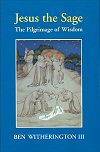
In the early Jesus movement, wisdom in the person of Jesus was believed to have returned to heaven, exalted to the right hand of God, and to reign from there. But Jesus as wisdom had left both his legacy and his influence behind. The sayings of Jesus recorded in the Gospels reflect not only the influence of the Israelite wisdom traditions, but also the tradition of the personification of wisdom.
In this provocative volume, Ben Witherington provides both an introduction to Israel’s wisdom traditions and insight into how Jesus and his sayings fit in that tradition. Beyond this, he demonstrates the ongoing significance and influence of these traditions on other New Testament writings. He concludes that Jesus may be viewed primarily as a prophetic sage emphasizing instruction, insight, and humor in a vein counter to the dominant culture.
Ben Witherington has written what is not only an extremely learned and fundamental book but one that is of theological importance as well. He offers much essential information on the sapiential background of ancient Jewish wisdom and the Jesus tradition that was influential in the shaping of earliest Christology. He corrects misguided opinions and leads us into the heart of the teachings of Jesus. He thereby contributes to our knowledge of earliest Christian thought, its Jewish background as well as its creative and innovative identity.
—Martin Hengel, emeritus professor of New Testament and Early Judaism, University of Tübingen
Ben Witherington III is professor of New Testament interpretation at Asbury Theological Seminary in Kentucky. He is the author of numerous works, including The Jesus Quest and New Testament History: A Narrative Account.
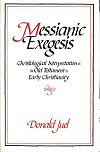
Professor Juel defends a simple thesis: “The beginnings of Christian reflection can be traced to interpretation of Israel’s Scriptures, and the major focus of that scriptural interpretation was Jesus, the crucified and risen Messiah.” He therefore proceeds to demonstrate how certain Old Testament texts came to be applied to Jesus as Christ. He argues that the interpretative application of such texts to Jesus was part of the interior logic of Christianity.
Professor Juel has given us a brilliant work of disciplined imagination . . . and for my part I detect a breath of fresh air . . . Professor Juel’s book makes an extremely valuable contribution not only to the study of how the earliest Christians interpreted the Hebrew Scriptures but also to our understanding of Christian origins.
—Journal of the American Academy of Religion
Though the relationship between Jewish modes of exegesis and the New Testament is recognized by everyone, few scholars actually succeed in illustrating that connection in intimate detail. Into the short and exclusive list of expert exegetes who can uncover the dynamic argument of a New Testament text, we must now put Donald Juel, whose new book Messianic Exegesis will certainly serve as a mode for how to investigate the problem of the use of the Old Testament in the New in the future.
—Word and World
Donald Juel (1942–2003) was the Richard J. Dearborn Professor of New Testament Theology at Princeton Seminary. Previously, he taught at Luther Seminary, (1978–1995), Princeton Seminary (1974–1978), and Indiana University (1972–1974).

Seeking the patterns of thought that shaped early beliefs about Jesus as the Christ, the late Robin Scroggs explores the social settings that sparked the primary Christological themes and traces their trajectories through the literature that made up the New Testament.
Robin Scroggs’ The People’s Jesus asks one of the most crucial and strangely neglected questions for the study of the early Jesus movement: how did the vision and beliefs of the Jesus movement appeal to the ordinary believer and why did they find them meaningful? By tracing three trajectories—the identifications of Jesus as the Cosmocrator, as the apocalyptic judge, and as the miracle–working Christos—Scroggs is able to construct a conceptual map that encompasses the core vision of the documents of the New Testament. This volume is full of deep learning, balanced judgment, and an extraordinary effort to discern coherent structures permeating earliest Christianity.
—John S. Kloppenborg, professor, department of religion, University of Toronto
Robin Scroggs was the Edward Robinson Professor of Biblical Theology, Union Theological Seminary, New York. His books include Paul for a New Day, The New Testament and Homosexuality, Christology in Paul and John, and The Text and the Times: New Testament Essays for Today.
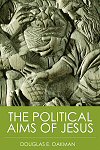
Amid competing portrayals of the “cynic Jesus,” the “peasant Jesus,” and the “apocalyptic Jesus,” the “political Jesus” remains a marginal figure. Douglas E. Oakman argues that advances in our social-scientific understanding of the political economy of Roman Galilee, as well as advances in the so-called “Third Quest” for the historical Jesus, warrant a revival—and a critical revision—of H.S. Reimarus’ understanding of Jesus as an instigator of revolutionary change.
Douglas Oakman is a demonstrated leader in the analysis of the economics, politics, and social conflicts of first-century Palestine. In this new work he pushes his political analysis even further, providing us with not only a fresh take on Jesus, but a fundamentally important one if one is to take seriously that Jesus was speaking (and acting) in ways that addressed the deepest concerns of his fellow Galileans and Judeans.
—K.C. Hanson, editor in chief, Wipf and Stock
Jesus the tax resister? An advocate of debt release—who allowed debtors to seize goods for subsistence? . . . Oakman challenges to the core the conveniently apolitical Jesus so tirelessly constructed and defended by Western interpreters.
—Richard Rohrbaugh, Emeritus Paul S. Wright Professor of Religious Studies, Lewis and Clark College
Douglas E. Oakman is professor of religion at Pacific Lutheran University and the author of Jesus and the Economic Questions of His Day and, with K.C. Hanson, Palestine in the Time of Jesus.
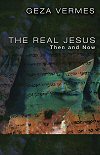
In The Real Jesus, Geza Vermes, best known for his work on the Dead Sea Scrolls and the Jesus of history, offers lucid and engaging presentations of his lifelong research, along with comments on a variety of contemporary religious themes, such as The Da Vinci Code, Mel Gibson’s controversial film The Passion of the Christ, Benedict XVI’s book Jesus of Nazareth, and the Gospel of Judas.
Informed by the work of a world-class scholar, the short articles in this book open to the reader the findings of some of the major discoveries of the twentieth century, such as the Dead Sea Scrolls, especially as they shed light on contemporary religious and biblical questions.
This collection of shorter popular pieces, many of which appeared in The Times of London and other newspapers, makes Vermes’ research on Christian origins, the Dead Sea Scrolls and most importantly Jesus the Jew accessible to everyone.
Geza Vermes is best known as a respected editor and translator of the Dead Sea Scrolls and as the author of a successful series of books on the historical Jesus. In these essays written for the popular press, he reveals himself as an astute and thoughtful cultural critic as well. He writes cogently and candidly on Mel Gibson, Dan Brown, Benedict XVI, the scandal of the delayed publication of the Dead Sea Scrolls, and, yes, the historical Jesus as well. Small bites, but each one nourishing.
—Luke Timothy Johnson, Robert W. Woodruff Professor of New Testament and Christian Origins, Candler School of Theology, Emory University
These elegant and humane essays will enlighten everyone interested in Jesus, the world in which he lived, and the modern efforts to portray him.
—E.P. Sanders, emeritus arts and sciences professor of religion, Duke University
Geza Vermes is emeritus fellow of the British Academy, and emeritus professor of Jewish studies and fellow of Wolfson College, Oxford University. He has been an international leader in the field of Dead Sea Scrolls research for more than 40 years, as recounted in his Providential Accidents: An Autobiography.
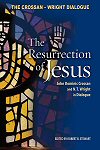
Two of today’s most important and popular New Testament scholars, John Dominic Crossan and N.T. Wright, here air their very different understandings of the historical reality and theological meaning of Jesus’ resurrection. The book highlights points of agreement and disagreement between them and explores the many attendant issues.
This book brings two leading lights in Jesus studies together for a long-overdue conversation with one another and with significant scholars from other disciplines.
The contributors include:
- John Dominic Crossan
- N.T. Wright
- Robert Stewart
- William Lane Craig
- Craig Evans
- R. Douglas Geivett
- Gary Habermas
- Ted Peters
- Charles Quarles
- Alan Segal
Robert B. Stewart is associate professor of philosophy and theology at New Orleans Baptist Theological Seminary, where he holds the Greer-Heard Chair of Faith and Culture and directs the annual Greer-Heard Point-Counterpoint Forum.
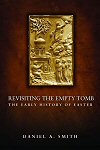
The Gospels disagree on what happened at the empty tomb, on who was there, and on what they saw or heard. The fact that our earliest written witness to the risen Christ, Paul, says nothing of the empty tomb has long provoked the question, what did early believers know about Easter, and when did they know it? Daniel A. Smith seeks to get behind the theological and apologetic concern to “prove” the resurrection and asks, where did the accounts of the early tomb come from, and what purpose did they originally serve? He shows that Paul is a valuable witness to the development of Easter traditions; that Q was already interested in connecting the disappearance of Jesus with his future role; that Mark was interested in the disappearance of Jesus, rather than in the empty tomb as such; and that both sources had interests different from the later Gospels. Chapters provide careful and insightful discussions of the earliest traditions about Jesus’ disappearance; in a conclusion Smith draws significant implications for a theory of Christian origins.
Smith has given us a carefully reasoned and original piece of scholarship that allows us to think about some old issues from new points of view. The fresh approach to Q and Jesus’ vindication is particularly suggestive. A solid contribution to a perennially fascinating topic.
—Dale C. Allison Jr., Erret M. Gragle Professor of New Testament, Pittsburg Theological Seminary
In Revisiting the Empty Tomb, Daniel Smith advances a thesis that makes sense of several puzzles that have plagued scholarship on the resurrection account. On his showing, the empty tomb story is not, as many had thought, fabricated as a deduction from the announcement of the resurrection of Jesus. Instead it belongs to a different complex of representations of the vindication of Jesus—the belief that he, like Elijah, Enoch, and other heroes was assumed and was therefore ‘not seen.’ Smith’s important and lucidly argued work promises to help sort out many of the complexities of the accounts of Jesus’ post-mortem vindication. A ‘must read’ for anyone concerned with the beliefs of the earliest Jesus-movement.
—John S. Kloppenborg, professor, department of religion, University of Toronto
Daniel A. Smith is associate professor of New Testament theology at Huron University College, and the author of a number of scholarly articles on the Gospels and early Christianity.